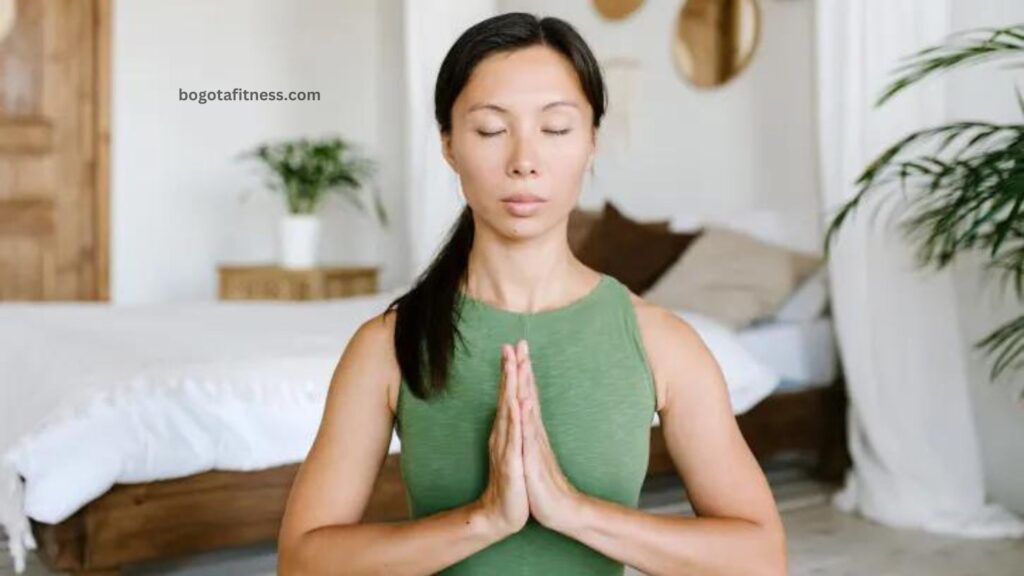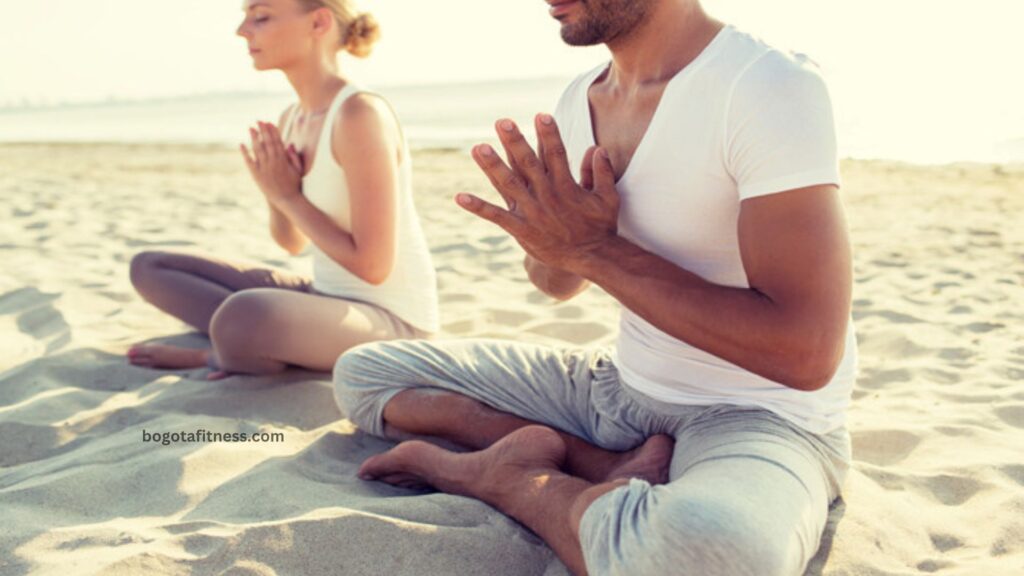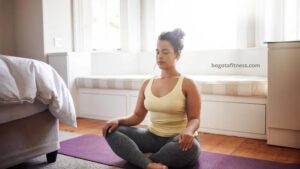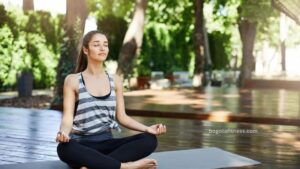It can be frightening and annoying to meditate for the first time. Sitting in silence may seem like an easy task, but it can be quite difficult! I’ve tried a number of times in the past to develop a regular meditation practice, but I was never successful. Thus, I find myself returning to the realm of Zen, as there’s no better moment to begin practicing meditation than during a pandemic.
The world seems to have turned upside down; we are unable to adjust to this new normal because of the constant barrage of information that changes. Right now, the only things we truly have control over are our thoughts and self. I believe that meditation is more beneficial than ever. In addition to getting some advice from two proprietors of meditation studios on how they’ve continued their practice for years, I used the internet, or the “digital streets,” to learn more about meditation.
The history of meditation is incredibly long, going all the way back to 5,000 BCE. Although the advantages of meditation have been known for just as long, scientific research on them didn’t begin until much later. Research conducted at Harvard Medical School in the 1960s showed that meditation improved health by lowering blood pressure, stress levels, and other factors. “All I’ve done is put a biological explanation on techniques that people have been using for thousands of years,” Dr. Herbert Benson stated in an interview with Time Magazine in 2003.
Since meditation has been used for centuries and its advantages have been demonstrated by science for many years, why isn’t it practiced by everyone?
Have your parents, a coach, or a friend ever offered you advise on how to complete a task, no matter how big or small? However, you struggled and became frustrated and just did it your way, until you finally followed the suggestion and realized, whoa, that was easy? Perhaps that applies to a bigger scale as well. Sometimes people are just too obstinate to admit when they are resisting what they most need (hey, that’s me).
What is Meditation?
Using a variety of methods, meditation trains your mind to function in new ways, fostering awareness, clarity, and inner serenity. What exercise is to the body, meditation is to the mind. Meditation teaches us to pause in a society where we are always on the go, feeling the stresses of work and family, launching side businesses, and rushing from place to place without being really present. to develop a better degree of awareness and a deeper appreciation for simply existing, as well as to be more in tune with oneself and others. And if that’s not enough, numerous studies have demonstrated the numerous health advantages of meditation, including: reduced stress, reduced anxiety, slowed heart rate, slowed breathing rate, lowered blood pressure, lowered cortisol levels in the blood, enhanced concentration and memory, enhanced blood circulation, and enhanced sleep, to mention a few.

Like there are several forms of exercise, there are numerous methods for practicing meditation. Starting is the most crucial step, and as you go along, you’ll figure out what strategies work best for you. There’s a reason meditation is called a practice: its goal is not perfection but rather the process of self-improvement.
Developing the habit of meditation is one of the hardest aspects of it. Fortunately, Monica Adams and Sarah Cirigliano of Montclair Zen Studio have given me some advice that will help you begin and maintain a regular meditation practice. Master mindset coaches Monica and Sarah assist their clients access their subconscious thoughts and make long-lasting changes by fusing traditional wisdom with cutting-edge science.
Advice From Professional Mindset Coaches
START SMALL
Monica and Sarah both recognize the value of beginning small. It is unrealistic to expect to meditate for an hour just by sitting down. It only takes a few minutes, and with time, your practice will develop and grow. Begin with breathing exercises, or simply practice thankfulness by taking a few deep breaths while placing your palm over your heart. Give it a try right now. Sarah started her meditation practice with breath work twice a day. She then added a little morning meditation, saw a change in her mood, and continued.
HOLD YOURSELF ACCOUNTABLE

Mark it on your calendar and follow through on it. Find a place in your home that works best for your schedule by experimenting with different areas; the ideal location should be cozy and free of distractions. Taking a class or joining a club is a terrific way to hold yourself accountable and meet people who are practicing what you are doing. Get instruction from a meditation teacher in the same manner that you would from a gym trainer.
Also Read: ULTIMATE FULL BODY DUMBBELL WORKOUT
BE GENTLE WITH YOURSELF
Learning any new skill requires patience, and meditation is no exception. There is no such thing as “bad” meditation practice; therefore, be kind to yourself and your practice. “In the practice of meditation, it matters not if you are a good meditator; what matters is if you show up in a powerful way outside of your meditation,” explains Monica. We meditate for the sake of our lives, so why not continue that feeling outside of those 20 minutes?
FEEL YOUR FEELINGS
Allow yourself to feel your emotions during meditation, or at any other time for that matter, regardless of what arises. Respect them so that you can start to see things from their perspective and work through them.
An Intro to Meditation Techniques
MINDFULNESS MEDITATION
This is a mindfulness and concentration exercise where you simply observe your thoughts and acknowledge them without passing judgment. You can practice mindfulness meditation in a class, by yourself, with a guide, or with an app like Headspace. It’s an excellent place to start if you’re new to meditation. Among the most often used methods is mindfulness, particularly in the West.
BREATHWORK
- The Stimulating Breath or Bellows Breath: By inhaling quickly, this technique aims to boost alertness and vitality.
- The Relaxing Breath or 4-7-8: This method can be used to help you fall asleep or to calm down in stressful situations. It is a kind of “natural tranquilizer” for the nervous system.
- Breath Counting: This approach, which is said to be deceptively easy, just consists of letting your breath come naturally, counting your breaths out, and recognizing when your mind wanders—which it most likely will.
BINAURAL BEATS

When distinct frequencies reach the left and right ears, the result is the perception of a binaural beat. For instance, if a tone is detected at 200 Hz by the left ear and 210 Hz by the right, the difference in the binaural beat is 10 Hz. It is possible for binaural beats to influence a person’s sleep patterns, behavior, and emotions. This is relevant to meditation since various beat frequencies can promote various behaviors and promote relaxation. According to a 2018 study, there are five different frequency patterns:
- Delta (binaural beat of 0.5-4 Hz) – deeper sleep
- Theta (4-7 Hz) – improved meditation, creativity, and REM sleep
- Alpha (7-13 Hz) – encourages relaxation
- Beta (13-30 Hz) – promotes concentration and alertness
- Gamma (30-50 Hz) – the least conclusive of the study, may promote maintenance of arousal
MANTRA BASED
In mantra-based meditation, the repeating of a word, phrase, or sound—such as “Om”—helps to cleanse the mind. Due to the ability to concentrate on something other than their breathing, some people might prefer this technique. This method also uses our voice, which has the potential to be a potent energy-resetting tool.
MOVEMENT
Motion Just add movement, and meditation is exactly what it sounds like! This might be as easy as starting a yoga pose like the sun salutation or going for a stroll while meditating. The idea of “breath to movement,” in which you allow your breath to direct your movement and vice versa, is probably something you’ve heard your yoga instructor mention if you’ve ever taken a class.
Get Started Today
It’s really simple to get started at any moment with the abundance of applications and online courses available. Numerous guided and unguided meditation apps are available, such as Headspace, Calm, and Insight timer (which is free!). Montclair Zen Studio and other meditation studios are excellent as well, particularly with the accountability and connection they provide. There are many virtual classes available, despite the fact that we are currently socially distancing ourselves. To get in touch with Monica and Sarah, check out the Montclair Zen Studio schedule, or locate a studio nearby. As long as you take action, it doesn’t matter how you go about it!
As Buddha once said, “Rule your mind, or it will rule you.”
Happy meditating!




